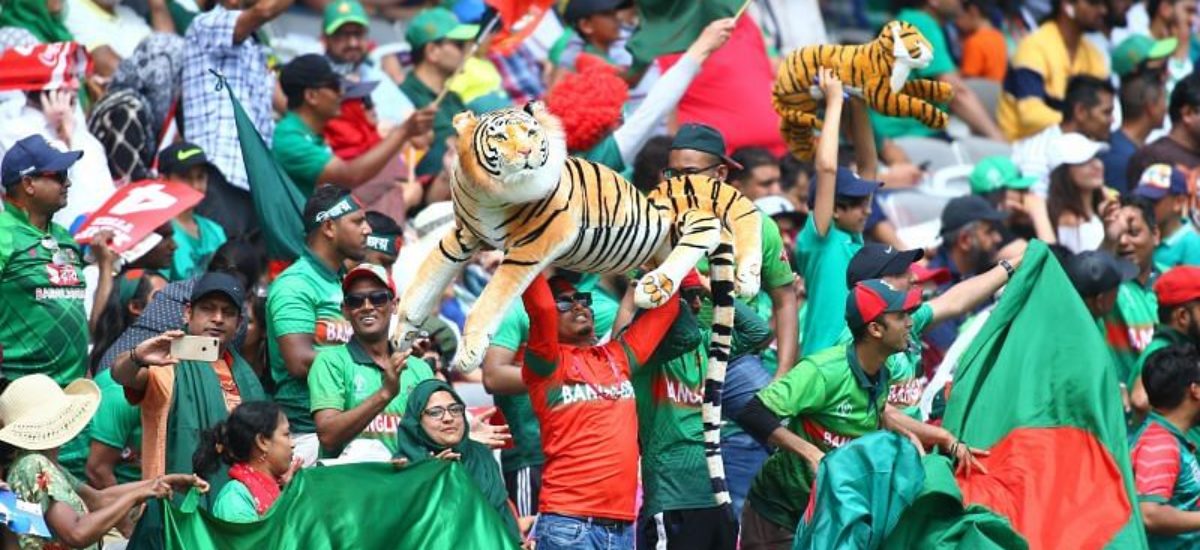Image Courtesy – SportsKeeda
Last weekend featured a double header at the T20 Cricket World Cup featuring four South Asian nations. The evening match played under lights was between two countries with a difficult relationship, diplomatically distant as of late. The match ended quite calmly, with Pakistan romping to a 10 wicket win, and images of a smiling Indian captain, congratulating his opposite number going viral.
The match before that was between two of the less fancied sides in the tournament; that have over the recent years created their own sort of rivalry, which revolves around finger pointing and mini pushing and shoving competitions. Whether this is good for cricket or bad for cricket is up for debate. What happens on the field of cricket is to be regulated by the match referee appointed to each game and we, as the general public, can simply have our personal views on the incident. The purpose of this piece is not comment on the dos and don’ts of behaviour on the cricketing field but to share concerns of how this rivalry or pattern of confrontation that has been brewing for the past couple of years has trickled down to reveal and at times legitimise violent and hateful speech against Sri Lanka’s minority groups.
The observation was made not during the weekend’s high octane clash but, perhaps more alarmingly, during the third match of the Bangladesh Under 19 Team’s tour of Sri Lanka. Each of the five one day games were live streamed on YouTube by Sri Lanka Cricket’s (SLC) official YouTube channel. The match also enabled live comments as it was being streamed, which is nothing out of the ordinary. The sentiments shared on this thread however had little to do with the game of cricket being played, instead providing commentary on (curiously) politics and race. The entirety of the game’s seven hour stream revealed a great deal of Islamophobic narratives that were at times spurred on, at times admonished and at times just accommodated.
A spreadsheet of some of the extracted comments can be viewed here.
It is also worth noting that the 3rd Youth ODI was on October 20th, before the main teams had even progressed to the stage that would see them face each other off in their clash on October 24th.
What is worrying is how hate speech and Islamophobia connected to a seemingly innocuous cricketing rivalry have existed for some time, and have since, likely been spurred on by the high intensity clash during the weekend. SLC has since disabled the live comment feature for the later Under-19 matches including the 5th Youth ODI on October 25th, possibly noting what a cesspool of hate a simple commenting tab on a cricket match could breed.
Bangladesh, in particular, seems to tick a few boxes that rile up homegrown racist and islamaphobic narratives. Symbols that hold a place of significance in the conversations of race supremacy and majoritarianism are a central point here. Bangladesh’s national animal and mascot being the Bengal tiger that also features prominently in the Bangladesh Cricket Board’s crest is an obvious place to start. If one considers the parallels drawn here a stretch, a casual browse through of social media after Sunday’s win would help support this observation. It isn’t a major cause for concern, one might think, but reinforcing war victory narratives is often just a mundane and innocent starting point for Sinhalese majoritarian trash talking. The pages I casually browsed through after Sri Lanka’s win did not display the sort of violence or hate spewed up in the live stream. Yet community guidelines and administrators on social media pages are usually quick to note and censor more inflammatory comments, and those pages that do accommodate them aren’t ideally picked by the social media algorithms that feed users who would not prefer to see hateful content on social media.
It is worth noting, that these are initial observations of what sort of talking points can emerge during a Sri Lanka-Bangladesh cricket match; talking points which at times may fly under the radar due to the euphoria of an intense and exciting cricketing rivalry. However, it isn’t a stretch to imagine how more careful and concerted studies into social media discourse around environments and situations such as these could expose recurring patterns that continue to breed and legitimize violent and hateful conversation.
The cricketing world has for the past year or so been driven by the need to address inequalities dealing with race and gender to make the sport more inclusive and address systems of discrimination and prejudice that exist both within and beyond the game of cricket. It is a prominent part of the ongoing T20 World Cup where players often ‘take the knee’ to show solidarity against these systems of oppression.
This is the first part of a series that will observe and question Sri Lanka Cricket’s role in addressing the socio-political issues and inequalities in Sri Lanka.


